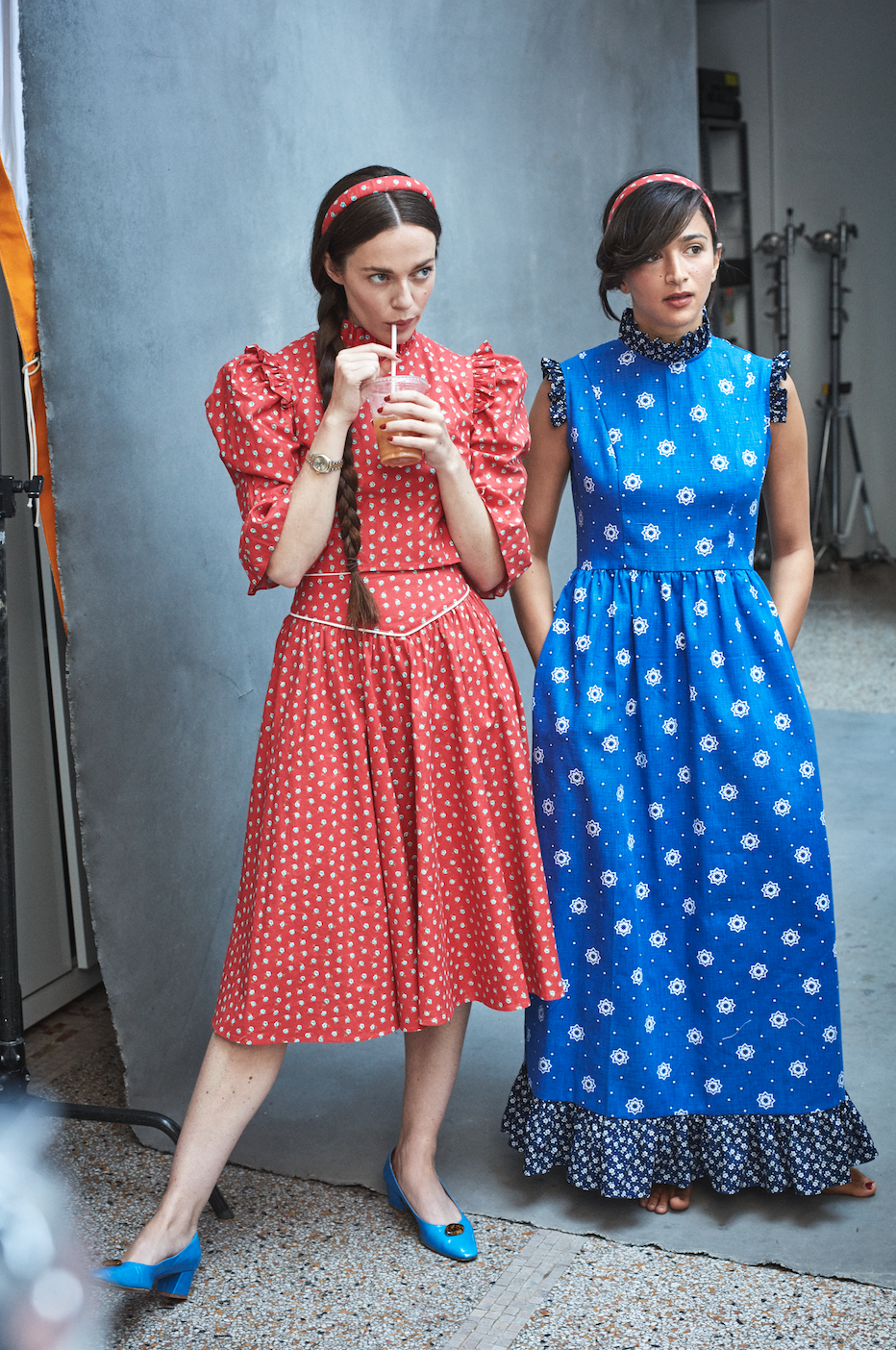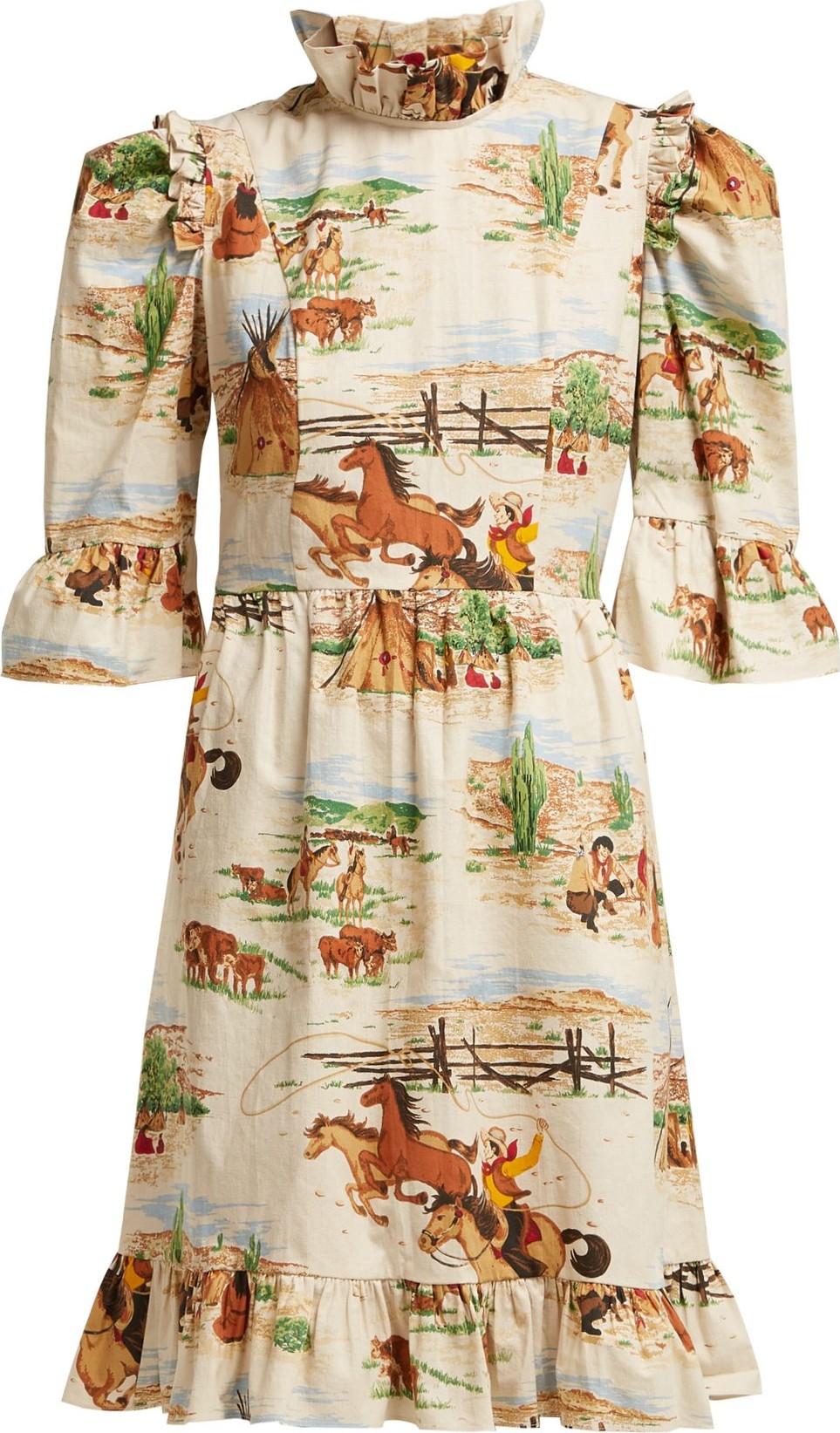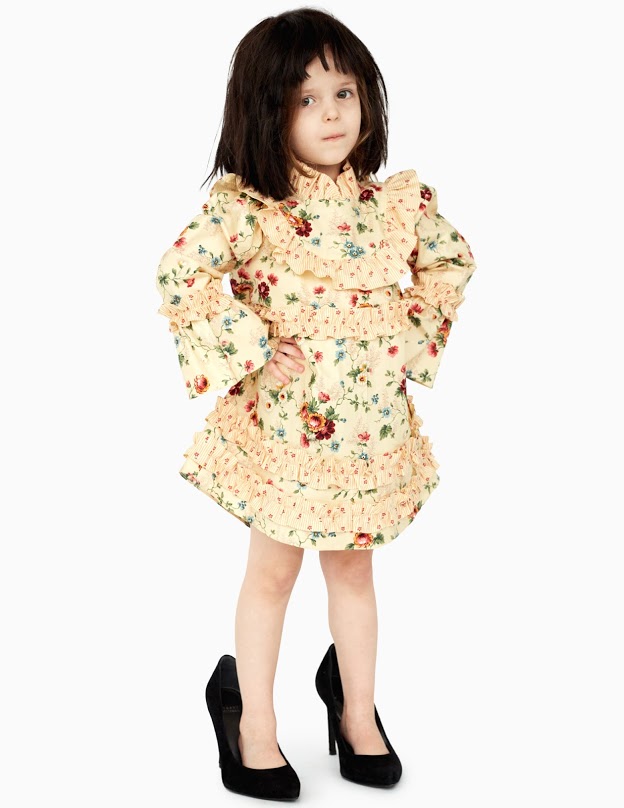That Dress!
That Dress!
By Elisabeth Aarhus
Swiping down swiftly through my Instagram feed on Sunday morning, with a nice piping hot porcelain cup of coffee supplied me by my boyfriend in bed and considering, yet again, whether to just break up my whole Insta-affair and renegotiate my NYTimes subscription (again!) my eyes dropped, suddenly, at the sight of Lena Dunham in a red dress. I thought I’d never say this about a dress in social media, but here it goes- I simply have to have that dress!
BATSHEVA is the name of the brand, and haha, the Bib dress may be just what I didn’t know I needed. Turns out I fell in love with a dress, or possibly Lena Dunham in it, during a night out in some New York City street, hailing a yellow-cab by the looks of it. There was no caption, no information about this, my newfound love, and come to think of it, I was slightly surprised that feminist icon Lena was handing out advertising endorsement like this. In order to find the information I needed, I had to scroll down through a bunch of weird comments underneath the image. Finally I found my way to an article in the abovementioned New York Times (!) by Chloe Male, writing about the Pioneer Women Roaming the City, a piece describing her ambivalence upon initially confronting these dresses designed by Batsheva Hay and mentioning briefly a text she received from a friend trying one on “I can’t tell if I love it or if it’s your ‘Big Love’ Halloween costume.”
To me it’s all love. Despite the fact that I’m often seduced by a more lavish image culture, the low-key batsheva.com website presentation, with kids wearing wigs and a Batsheva dress has me going in so many directions all at once, from ultra-orthodox Jewish women, to the Amish and The Little house on the prairie to name just a few, that the end result is a highly contemporary and completely off the rails show. In the end, I land on an image I seem to recall of myself, taken by a professional studio-photographer in Oslo Norway, an image commissioned by my mother to mark my Christian confirmation date more than 25 years ago wearing a dress not completely alien to the Batsheva line, custom fitted in the Oslo branch of Laura Ashley in 1988. The Batsheva prints are Laura Ashleyesque micro-florals, but the shape is rather ill-fitting comparatively; bigger perhaps, or looser. In any case, just perfect I gather for where I’m at at the moment, and for many more it seems, if social media is to be trusted.
The thing that makes fashion both thrilling (to the shopper) and maddening (to the retail executive) is that it’s so hard to predict. After all, who would have thought that, in 2018, one of the hottest labels would be one that is primarily inspired by traditional Hasidic, Amish and Victorian garb?
Hayley Phelan (also in the NY Times) wrote the above, in a section categorising people by their fashion tastes, and reading through it occurs to me that I find myself, and Batsheva, in what Phelan designates the subversive conservative section.
In The New Yorker I get the short version of Batsheva Hay, ‘the former lawyer with two young children, who decided to have a favourite vintage dress remade by a tailor, Zoila Cruz’. Designed by Laura Ashley, (would you believe it?), -the dress, like most of the British icon’s clothing, blended a folksy craft aesthetic with the dreamy romanticism of the Pre-Raphaelites
Anna Russell goes on to describe just how biographic the designs of the Batsheva dresses actually are.
Raised in a secular Jewish family, Ms. Hay has always loved vintage clothes. She never trained as a designer, nor as a pattern maker, but married fashion photographer Alexei Hay whom she also modelled for. When she had that first dress customised and re-made in vintage materials, which soon turned into five unique ones and so on, she was at home with their two small children keeping an orthodox household according to Russell.
Lena Dunham, who bought a metallic rose-print dress with a piecrust collar that she had seen on Instagram said “They really look like the party dresses that you would’ve wanted when you were six, or like the dresses that characters in your favorite book would have worn.”
Exactly! I find myself muttering, and yet, I wonder…
Being someone who rarely yearns for material things, who has rarely, if ever, felt that sting of desperately wanting to OWN that THING, I’m surprised by my childish response of wanting that dress now! Is Ms Hay’s norm-core with a vengeance project about more than just being the next cool thing by playing with folksy and pseudo mystical themes? Do the dresses aspire to be more than just a quick fix given that a person like Lena Dunham endorse them, or should I, as a friend of mine once pointed out, just for once, leave it, and let it be what it is? Fashion, play, the result of a process of change Ms Hay was going through, turning into a designer quite by chance while trying to cover her own needs and desires; and this life-altering turn of events, is something I’m convinced a number of readers, myself included, would be all too familiar with.
Read more about Batsheva here:
To buy one:
WORDS: The Chromarty
PHOTOS: Batsheva.com & from Lena Dunham’s official Instagram account
Junior high in Oslo portrait from 1989. Elisabeth wearing a Laura Ashley dress















